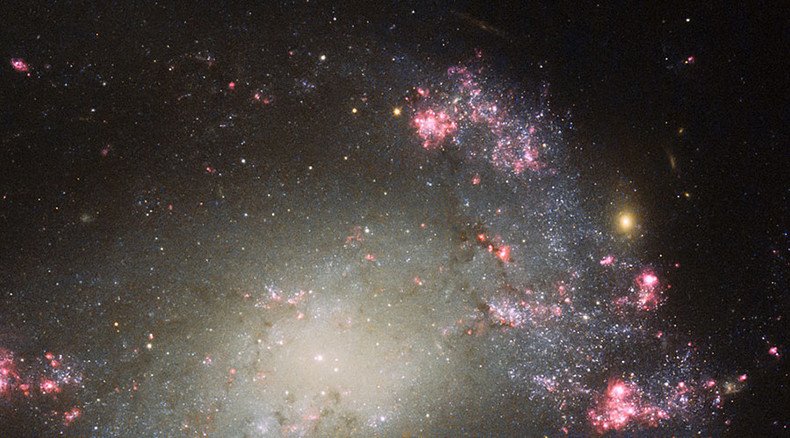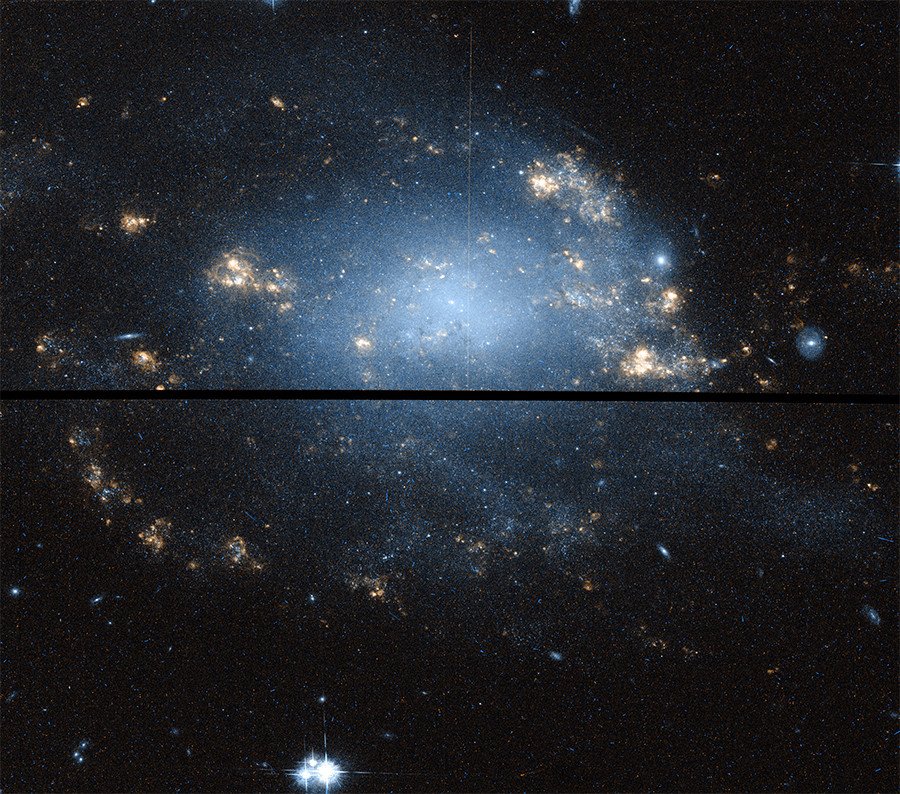Hubble telescope captures cosmic 'fireworks' from barred spiral galaxy

What looks like a series of spectacular fireworks with bursts of pink and red, spiced up by dark lanes of mottled cosmic dust, is actually an image of a quite unusual spiral galaxy known as NGC 428, captured by NASA's Hubble Space Telescope.
The barred spiral galaxy lies about 48 million light years away from Earth, in the constellation of Cetus (The Sea Monster). NGC 428 was discovered in 1786 by the German-born British astronomer William Herschel, who constructed his first large telescope and spent years investigating the sky.

In Hubble's close-up shot, NGC 428’s spiral structure appears to be quite distorted and warped, but that's most likely a result of a collision between two galaxies. A telltale sign of a merger, according to NASA, is that there appears to be a substantial amount of star formation occurring within the spiral galaxy. When galaxies collide, their clouds of gas can merge, creating intense shocks, often triggering new waves of star formation.
READ MORE: NASA explains how black hole ‘fountain’ regulates galaxy star birth
In 2013, a type of Supernova called SN 2013ct was discovered within NGC 428 by Stu Parker from the Backyard Observatory Supernova Search (BOSS) project in Australia and New Zealand. It's not visible in NASA's latest image, however.












